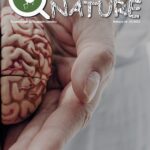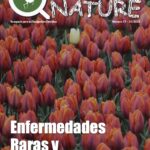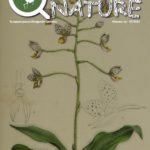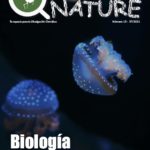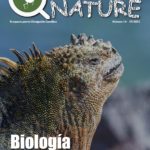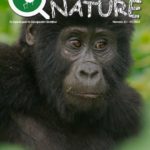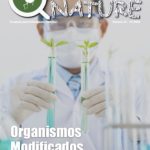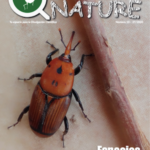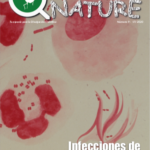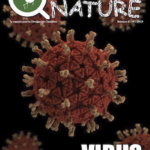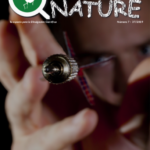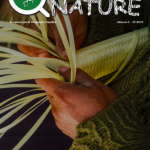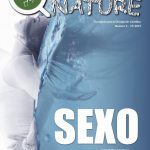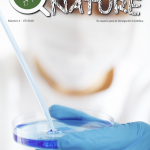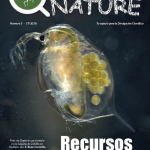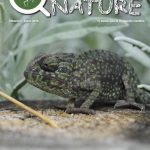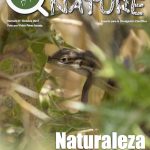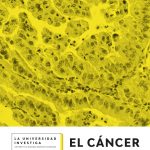La crisis hídrica: consumo, escasez y nuevas fuentes de agua
- Real Decreto 1798/2010, de 30 de diciembre, por el que se regula la explotación y comercialización de aguas minerales naturales y aguas de manantial envasadas para consumo humano. Boletín Oficial del Estado Núm. 16. 19 de enero 2011. Ministerio de la Presidencia. Gobierno de España. | BOE-A-2011-971
- Resolución 64/292. El derecho humano al agua y el saneamiento. 3 de agosto 2010. Asamblea General de Naciones Unidas | A/RES/64/292
- ACOSTA BALADÓN, A. (2003) Captación de nieblas: fundamentos, experiencias y aplicaciones en el ámbito forestal. Revista Montes, 73. pp: 59-68 [documento en línea] Disponible en http://www.divulgameteo.es/uploads/Captaci%C3%B3n-de-nieblas.pdf
- TIPPLE, C.T.; BENSON, S.; SCHOLEY, A. (2017) A review of the physiological factors associated with alcohol hangover. Current Drug Abuse Reviews, 9(2). pp: 93-98 | doi: 10.2174/1874473710666170207152933.
- LUBICK, N. (2008) Cocaine from drains in Spain. Environmental Science and Technology. American Society. [e-pub] | doi: 10.1021/es8020606
- MARTINS, A. (2017) ¿Puede la desalinización ser la solución para la crisis mundial del agua? BBCMundo. [enlace en línea] Recuperado de http://www.bbc.com/mundo/noticias-39332148
- MENDOZA, A.; LÓPEZ DE ALDA, M.; MASTROIANNI, N.; BARCELÓ, D.; GONZÁLEZ-ALONSO, S.; VALCÁRCEL, Y. (2014) Ocurrence of drugs abuse and benzodiazepines in river waters from the Madrid Region (Central Spain). Chemosphere, 95. pp: 247-255 | doi: 10.1016/j.chemosphere.2013.08.085
- PATHAK, N.; HEIJNEN, H. (2004). Rainwater Harvesting and Health Aspects-Working on WHO guidance. University of Hawaii: Honolulu, HI, USA.
- TARBUCK, E.J.; LUTGENS, F.K. (1999) Ciencias de la Tierra. Prentice Hall. Madrid
- TEJADA, C.; QUIÑONEZ, E.; PEÑA, M. (2014) Contaminantes emergentes en aguas: metabolitos de fármacos. Una revisión. Revista Facultad de Ciencias Básicas. 10(1). pp: 80-101
- YANG, H.; ZHU, H.; HENDRIX, M.M.R.M.; LOUSBERG, N.J.H.G.M.; DE WITH, G.; CATARINA, A.; XIN, J.H. (2013) Temperature-triggered collection and release of water from fogs by a sponge-like cotton fabric. Advanced materials, 25(8). pp:1150-1154. | doi: 10.1002/adma.201204278
- ZHOU, H.; YING, T.; WANG, X.; LIU, J. (2016) Ocurrence and preliminarly environmental risk assessment of selected pharmaceuticals in the urban rivers, China. Scientific Reports, 6. [e-pub] | doi:10.1038/srep34928
Infografía: Importancia del agua
- USGS (2016). How much water is there on, in, and above the Earth?. Disponible online: http://water.usgs.gov/edu/earthhowmuch.html (última modificación 12-2016)
- Chaplin, M. (2018) Hydrogen Bonding in Water. Disponible online: http://www1.lsbu.ac.uk/water/water_hydrogen_bonding.html
- Food and Agriculture Organization of the United Nations (FAO) (2016). Water uses. AQUASTAT, disponible online: http://www.fao.org/nr/water/aquastat/water_use/index.stm
- Instituto Nacional de Estadística (2017). España en Cifras. Disponible online: http://www.ine.es/prodyser/espa_cifras/2017/index.html#6
Tricópteros: los desconocidos arquitectos de los ríos
- Martín, L. (2017) “Biodiversidad y conservación de los tricópteros (Insecta: Trichoptera) de la península ibérica y la Macaronesia”. Tesis doctoral. Facultad de Biología, Universidad de Santiago de Compostela, Santiago de Compostela, 318 pp.
- Martínez, J. (2014) “Biodiversidad de los tricópteros (Insecta: Trichoptera) de la península ibérica: estudio faunístico y biogeográfico”. Tesis doctoral. Facultad de Biología, Universidad de Santiago de Compostela, Santiago de Compostela, 340 pp.
- González, M.A. & Cobo, F. (2006). “Macroinvertebrados de las aguas dulces de Galicia”. Hércules Ediciones. 173 pp.
Plásticos y bacterias: La nueva guerra marina
- Yoshida, S. et al. (2016). A bacterium that degrades and assimilates poly(ethylene terephthalate). Science, 351, 1196-1199.
- Lusher, A., (2015), Marine Anthropogenic Litter, Noruega: Springer International Publishing.
- Au, S., Lee, Cindy.,Weinstein, J., van den Hurk, P. y Klaine, S. (2017). Trophic Transfer of Microplastic in Aquatic Ecosystems: Identifying Critical Research Needs. Integrated Environmental Assessment and Management ,13 (3), 505-509.
- Tanasupawat, S., Takehana, T., Yoshida, S., Hiraga, K. y Oda, K. (2016). Ideonella sakaiensis sp. nov., isolated from a microbial consortium that degrades poly(ethylene terephthalate). International Journal of Sistematic and Evolutionary Microbiology, 66, 2813-2818.
- Fecker, T. et al. (2018). Active Site Flexibility as a Hallmark for Efficiency Degradation by I. sakaiensis PETase. Biophysical Journal, 114, 1302-1312.
La pintora de océanos: Marie Tharp
- Barton, C. (2002). Marie Tharp, oceanographic cartographer, and her contributions to the revolution in the Earth Sciences. Geological Society London, Special Publications, 192: 215-228.
- Doel, R.E., Levin, T.J., y Marker, M.K., (2006). Extendido modern cartography to the ocean depths: military patronato, Cold War Priorities and Heezen-Tharp mapping project, 1952-1959. Journal of Historical Geography, 32(3): 605-626.
El embalse
- Margalef, R. 1983. Limnología. Editorial Omega, Barcelona, España.
- Prats, J., Morales-Baquero, R., Dolz, J. y Armengol, J. 2014. Aportaciones de la limnología a la gestión de embalses. Ingeniería del Agua, 18(1):83–97.
#PreguntasHN– ¿Por qué no debemos beber agua salada?
- Farquhar, W. B., Edwards, D. G., Jurkovitz, C. T., & Weintraub, W. S. (2015). Dietary Sodium and Health: More Than Just Blood Pressure. Journal of the American College of Cardiology, 65(10), 1042–1050. http://doi.org/10.1016/j.jacc.2014.12.039
- Sengupta, P. (2013). Potential Health Impacts of Hard Water. International Journal of Preventive Medicine, 4(8), 866–875.
- NOAA. Can humans drink seawater? National Ocean Service website, https://oceanservice.noaa.gov/facts/drinksw.html, 10/10/17.
- Farquhar, W. B., Edwards, D. G., Jurkovitz, C. T., & Weintraub, W. S. (2015). Dietary Sodium and Health: More Than Just Blood Pressure. Journal of the American College of Cardiology, 65(10), 1042–1050. http://doi.org/10.1016/j.jacc.2014.12.039
- Palau Miguel, M.; Guevara Alemany, E. (2011) “Calidad del agua de consumo humano en españa. Informe técnico.“. Ministerio De Sanidad, Servicios Sociales e Igualdad.
- Lenntech. Composition of Seawater. Disponible online: https://www.lenntech.com/composition-seawater.htm
- Dennis O. Nelson. Fresh Water Natural Composition. Water Encyclopedia. Disponible online: http://www.waterencyclopedia.com/En-Ge/Fresh-Water-Natural-Composition-of.html
El museo en casa – Beber o no beber. Esa es la cuestión…
- Calidad del agua de consumo humano en España. Informe técnico Año 2015. Informes, estudios e investigación. Ministerio de Sanidad, Servicios Sociales e Igualdad. España. PDF. Consultada el 16 mayo 2018.
- Agua, saneamiento e higiene, UNICEF. La infancia y el agua: estadísticas generales. Web. Consultada el 16 mayo 2018.
- NACIONES UNIDAS. Asuntos que nos importan. Agua. Web. Consultada el 16 mayo 2018.
- Unwater. Coordinating the UN’s work on water and sanitation. United Nations. Web. Consultada el 16 mayo 2018.
Anomalías del agua sólida
- Goy, C., Potenza, M. A. C., Dedera, S., Tomut, M., Guillerm, E., Kalinin, A., . . . Grisenti, R. E. (2018). Shrinking of Rapidly Evaporating Water Microdroplets Reveals their Extreme Supercooling. Physical Review Letters, 120(1), 015501. doi:10.1103/PhysRevLett.120.015501
- Millot, M., Hamel, S., Rygg, J. R., Celliers, P. M., Collins, G. W., Coppari, F., . . . Eggert, J. H. (2018). Experimental evidence for superionic water ice using shock compression. Nature Physics, 14(3), 297-302. doi:10.1038/s41567-017-0017-4
- Pradzynski, C. C., Forck, R. M., Zeuch, T., Slavíček, P., & Buck, U. (2012). A Fully Size-Resolved Perspective on the Crystallization of Water Clusters. Science, 337(6101), 1529-1532. doi:10.1126/science.1225468
Las lagunas temporales, hábitats de especies peculiares
- Díaz-Paniagua, C., Fernández-Zamudio, R., Serrano, L., Florencio, M., Gómez-Rodríguez, C., Sousa, A., Sánchez Castillo, P., García-Murillo, P. y Siljestrom, P. 2015. El Sistema de Lagunas Temporales de Doñana, Una Red de Hábitats Acuáticos Singulares.Ed. Organismo Autónomo de Parques Nacionales. Ministerio de Agricultura, Alimentación y Medio Ambiente. 290 pp. Madrid. (ISBN: 978-84-8014-880-1).
- Grillas, P., Gauthier, P., Yavercovski, N. y Perennou, C. (2004). Mediterranean temporary pools, Vol.1 – Issues relating to conservation, functioning and management, Tour du Valat, France.
- Williams, P., Biggs, J., Fox, G., Nicolet, P. y Whitfield, M. (2001) History, origins and importance of temporary ponds. In: Rouen, K. (eds.) European Temporary Ponds: A Threatened Habitat. Freshwater Biological Association, pp 7-15.
- Williams, D.D. (2006) The biology of temporary waters. Oxford University Press, Oxford.
Marismas y Estuarios
- González-Ortegón, E., Baldó, F., Arias, A., Cuesta, J. A., Fernández-Delgado, C., Vilas, C., & Drake, P. (2015). Freshwater scarcity effects on the aquatic macrofauna of a European Mediterranean-climate estuary. Science of the Total Environment, 503, 213-221.
- González-Ortegón, E., M. E. M. Walton, B. Moghaddam, C. Vilas, A. Prieto, H. A. Kennedy, J. Pedro Cañavate, and L. Le Vay.. (2015). Flow regime in a restored wetland determines trophic links and species composition in the aquatic macroinvertebrate community. Science of the Total Environment, 503, 241-250.
- Somero, G. N. (2002). Thermal physiology and vertical zonation of intertidal animals: optima, limits, and costs of living. Integrative and comparative biology, 42(4), 780-789.
- González-Ortegón, E., Pascual, E., Cuesta, J. A., & Drake, P. (2006). Field distribution and osmoregulatory capacity of shrimps in a temperate European estuary (SW Spain). Estuarine, Coastal and Shelf Science, 67(1-2), 293-302.
- Drake, P., Borlán, A., González‐Ortegón, E., Baldó, F., Vilas, C., & Fernández‐Delgado, C. (2007). Spatio‐temporal distribution of early life stages of the European anchovy Engraulis encrasicolus L. within a European temperate estuary with regulated freshwater inflow: effects of environmental variables. Journal of Fish Biology, 70(6), 1689-1709.
- Baldó, F. and Drake, P. ‘A multivariate approach to the feeding habits of small fishes in the Guadalquivir Estuary’, Journal of Fish Biology, 61(2002), pp. 21–32. doi: 10.1006/jfbi.2002.2064
- González-Ortegón, E., & Drake, P. (2012). Effects of freshwater inputs on the lower trophic levels of a temperate estuary: physical, physiological or trophic forcing?. Aquatic sciences, 74(3), 455-469.
- Vilas C, P Drake, N Fockedye. 2008. Feeding preferences of estuarine mysids Neomysis integer and Rhopalophthalmus tartessicus in a temperate estuary (Guadalquivir estuary, SW Spain). Estuar. Coast. Shelf Sci. 77: 345-356.
El pionero de la limnología: Celso Arévalo
- Arévalo, C. 1.914a. El Laboratorio hidrobiológico del Instituto de Valencia. Boletín de la Real Sociedad Española de Historia Natural, 14: 338-348.
- Arévalo, C. 1914b. La Hidrobiología como ciencia creada por las nuevas orientaciones de la Historia Natural. Ibérica, 2 (26): 317-319.
- Casado de Otaola, Santos. 1.996. Los primeros pasos de la ecología en España. Ministerio de Agricultura, Pesca y Alimentación.
- Viets, K. 1.918. Eine neue Limnesia-Species. Zoologischer Anzeiger, 50:111-112.
- Viets, K. 1.930. Zur Kenntnis der Hydracarinen – Fauna von Spanien -. Archiv für Hydrobiologie, 21: 175-240, 359-446.
Termodinámica para adictos al café
- MÜLLER, E.A. (2002) Termodinámica básica. Universidad Simón Bolívar. 2ª edición.
- BIRCH, H (2016) 50 cosas que hay que saber sobre química. Ariel.
- DEL BARRIO, J.I.; MONTEJO, C. (2001) Química. Editorial SM.
- DÍAZ TEJERA, D. (2012) En torno al problema del movimiento perpetuo. Una visión histórica. Academia de Ciencias e Ingenierías de Lanzarote. [documento en línea] Disponible en http://www.academiadelanzarote.es/Discursos/Discurso%2050.pdf
La fascinante relación simbiótica entre las hormigas cortadoras de hojas y leucoagaricus gongylophorus
- Aylward, F. O.; Burnum-Johnson, K. E.; Tringe, S. G.; Teiling, C; Tremmel, D. M.; Moeller, J. A.; Scott, J. S.; Barry, K. W.; Piehowski, P.D.; Nicora, C. D.; Malfatti, S. A.; Monroe, M. E.; Purvine, S. O.; Goodwin, L. A.; Smith, R. D.; Weinstock, G. M.; Gerardo, N. M.; Suen, G; Lipton, M. S.; Currie, C. R. 2013. Leucoagaricus gongylophorus Produces Diverse Enzymes for the Degradation of Recalcitrant Plant Polymers in Leaf-Cutter Ant Fungus Gardens. NCBI.
- Fernández, F. (ed.). 2003. Introducción a las Hormigas de la región Neotropical. Instituto de Investigación de Recursos Biológicos Alexander von Humboldt, Bogotá, Colombia.
- Sánchez-Peña, S. R. 2005. New view on origin of Attine ant–fungus mutualism: Exploitation of a preexisting insect–fungus symbiosis (Hymenoptera: Formicidae). Annals of the Entomological Society of America 98.
- De Fine Licht, H. H.; Boomsma, J. J.; Tunlid, A. 2014. Symbiotic adaptations in the fungal cultivar of leaf-cutting ants. Nature.
- Piper, R. 2007. Extraordinary Animals: An Encyclopedia of Curious and Unusual Animals. Greenwood Press.
